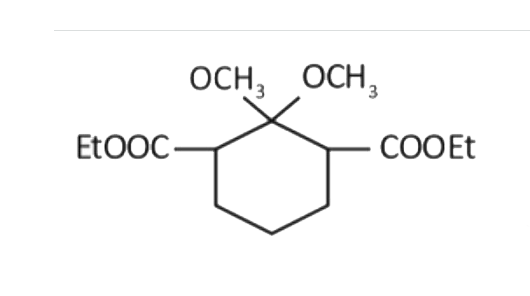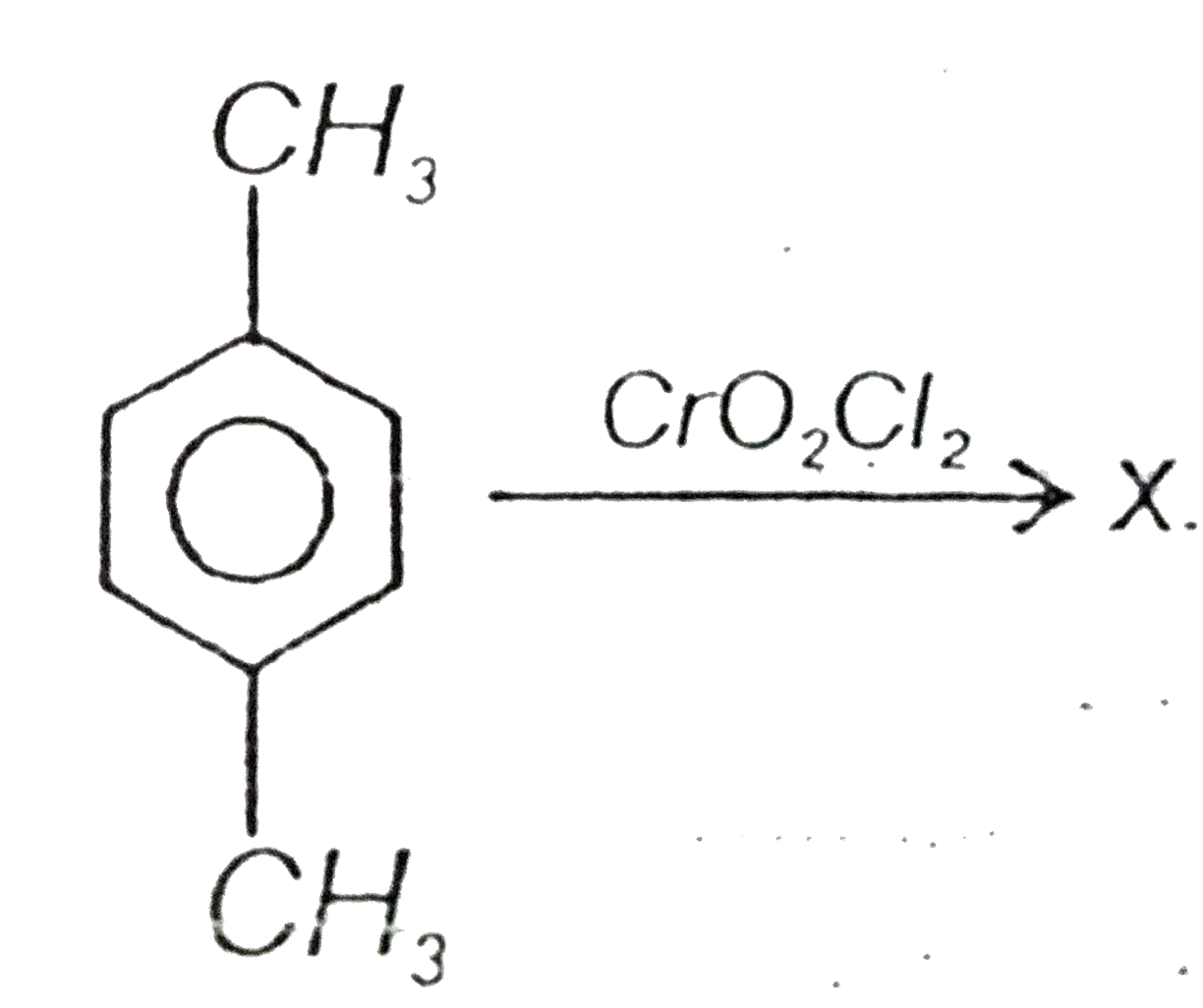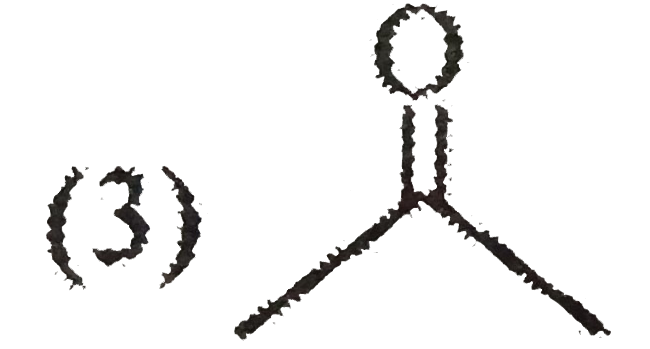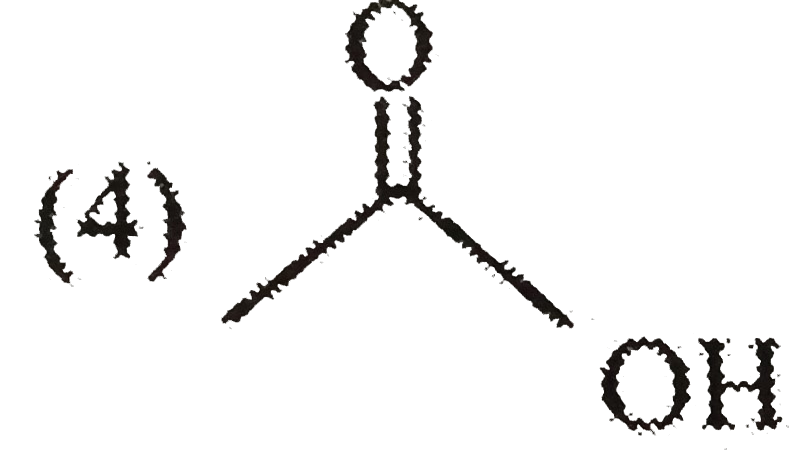R−CNH3O+−−−−−−−−−−−→Complete hydrolysisXNH3−−→ΔY(i)Br2+KOH−−−−−−−−→(ii)H3O+Z
Identify Z.
R−NH2
R−CH2NH2
R−O∣∣C−NH2
R-CN
The correct Answer is:1
To solve the question step by step, we will follow the transformations outlined in the question and the video transcript.
Step 1: Complete Hydrolysis of R-CN
We start with the compound R-CN (where R is an alkyl group and CN is the nitrile group). The first step is to perform complete hydrolysis using water (H2O) under acidic conditions (H3O+).
Reaction:
R−CN+2H2OH3O+−−−→R−COOH+NH+4
Explanation:
- The nitrile group (CN) is converted to a carboxylic acid (R-COOH) and ammonium ion (NH4+).
- The carbon atom in the nitrile group becomes part of the carboxylic acid.
Step 2: Reaction with Ammonia (NH3)
Next, we take the carboxylic acid (R-COOH) and react it with ammonia (NH3) and heat it.
Reaction:
R−COOH+NH3Δ−→R−CO−NH2
Explanation:
- The carboxylic acid reacts with ammonia to form an amide (R-CO-NH2).
- This reaction involves the formation of an ammonium salt intermediate, which upon heating gives the amide.
Step 3: Bromination and Hydrolysis
Now, we perform the Hofmann degradation on the amide (R-CO-NH2) using bromine (Br2) and potassium hydroxide (KOH).
Reaction:
R−CO−NH2+Br2+KOH→R−COOH+NH2Br
Explanation:
- The amide undergoes bromination, leading to the formation of a carboxylic acid (R-COOH) and bromoamine (NH2Br).
- The reaction typically results in the loss of one carbon atom from the amide.
Step 4: Final Hydrolysis
Finally, we perform hydrolysis on the bromoamine product.
Reaction:
NH2Br+H2O→NH2+HBr
Explanation:
- The bromoamine can be hydrolyzed to produce ammonia (NH2) and hydrobromic acid (HBr).
- However, the main product of interest is the carboxylic acid formed earlier.
Conclusion: Identify Z
After performing all the steps, the final product Z is:
Z=R−NH2+CO2
Final Answer
Thus, the final product Z is:
Z=R−NH2+CO2
---
We start with the compound R-CN (where R is an alkyl group and CN is the nitrile group). The first step is to perform complete hydrolysis using water (H2O) under acidic conditions (H3O+).
R−CN+2H2OH3O+−−−→R−COOH+NH+4
- The nitrile group (CN) is converted to a carboxylic acid (R-COOH) and ammonium ion (NH4+).
- The carbon atom in the nitrile group becomes part of the carboxylic acid.
Next, we take the carboxylic acid (R-COOH) and react it with ammonia (NH3) and heat it.
R−COOH+NH3Δ−→R−CO−NH2
- The carboxylic acid reacts with ammonia to form an amide (R-CO-NH2).
- This reaction involves the formation of an ammonium salt intermediate, which upon heating gives the amide.
Now, we perform the Hofmann degradation on the amide (R-CO-NH2) using bromine (Br2) and potassium hydroxide (KOH).
R−CO−NH2+Br2+KOH→R−COOH+NH2Br
- The amide undergoes bromination, leading to the formation of a carboxylic acid (R-COOH) and bromoamine (NH2Br).
- The reaction typically results in the loss of one carbon atom from the amide.
Finally, we perform hydrolysis on the bromoamine product.
NH2Br+H2O→NH2+HBr
- The bromoamine can be hydrolyzed to produce ammonia (NH2) and hydrobromic acid (HBr).
- However, the main product of interest is the carboxylic acid formed earlier.
After performing all the steps, the final product Z is:
Z=R−NH2+CO2
Thus, the final product Z is:
Z=R−NH2+CO2
Similar Questions
 (i)H2O+−−−−−→(ii)ΔAH2NOH−−−−→pH5/6B(i)Conc. H2SO4−−−−−−−−−−→Δ(ii)H3O+C
(i)H2O+−−−−−→(ii)ΔAH2NOH−−−−→pH5/6B(i)Conc. H2SO4−−−−−−−−−−→Δ(ii)H3O+C
Compound C in above reaction sequence isView SolutionComplete the following reactions:
(i) CH3−CH3∣C∣Cl−CH2CH3alcKOH−−−−→ΔAO3−−−−−→Zn/H2O(B+C)
(ii) CH3ICH−CH3alcKCN−−−−→A(i)SnCl2/HCl−−−−−−−−−−−−→(ii)H2O.OH.H2O2B
(iii) HCNHCl/AlCl3−−−−−−→A(i)C6H6Δ−−−−−−−−−−→(ii)(H2O)/H−B
(iv) View Solution
View Solution
Knowledge Check
- Question 1 - Select One
R−O∣∣C−ClNH3−−→NH4Cl+(X)P4O10−−−→Δ(Y)(i)DIBAL−H−−−−−−−−−→(ii)H2O(Z)
The compound (Z) isAR-COOHBR−CH2−OHCR−C≡NDRCHO - Question 2 - Select One
CH3−O∣∣C−OHND3−−−−−→Δ(A)Br2−−−−−→KOH(B)
Product (B) is -ACH3−ND2BCH3−NH2C D
D
- Question 3 - Select One
P+QAq.K2CO3−−−−−−→ΔRHCN−−→SH3O+−−−→ΔPh=CH−C∣OHH−COOH
The compound R is :APh−CH2−CH=OBPh−CH=CH−CH=OCPh−CH2−C∣∣O−CH3DPh−CH2−CH=CH−CHO
CH3CH3∣C∣CH3−Br KOH (alcoholic) −−−−−−−−−−−−→Δ(A)HBr/R2O2−−−−−−→(B)(major)
(B) isView SolutionAKCN−−→BH3O+−−−−→NH3/ΔCBr2−−→KOHCH3−CH2−NH2
reactant A in given reaction sequence?View SolutionCH3−C∣BrH−CH2−O∣∣C−CH3N2H4,ӨOH−−−−−→Δ product :
View SolutionIdentify the compound 'D' in the following series of reactions .
CH3−CH3∣CH−CH2−CH2−Bralc.KOH−−−−−−→Δ'A'(i) Conc.H2SO4−−−−−−−−−−→(ii)H2O,Δ'D'(Major product)+'C'(Minor product)'B'HI,Δ−−−−−−→−H2O'D'(Major product)+(Minor product)View SolutionIdentify the compound 'D' in the following series of reactions .
CH3−CH3∣CH−CH2−CH2−Bralc.KOH−−−−−−→Δ'A'(i) Conc.H2SO4−−−−−−−−−−→(ii)H2O,Δ'D'(Major product)+'C'(Minor product)'B'HI,Δ−−−−−−→−H2O'D'(Major product)+(Minor product)View Solution

